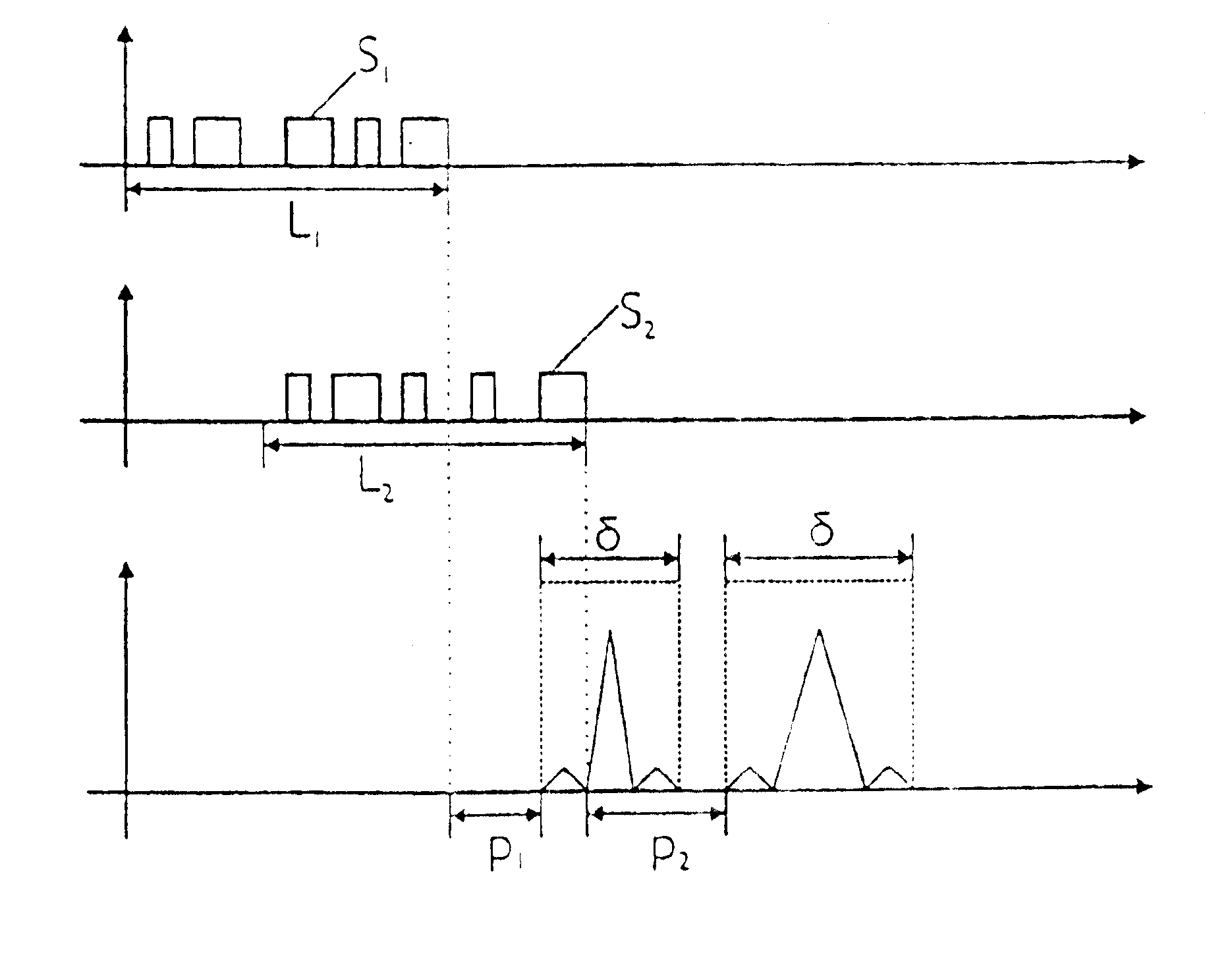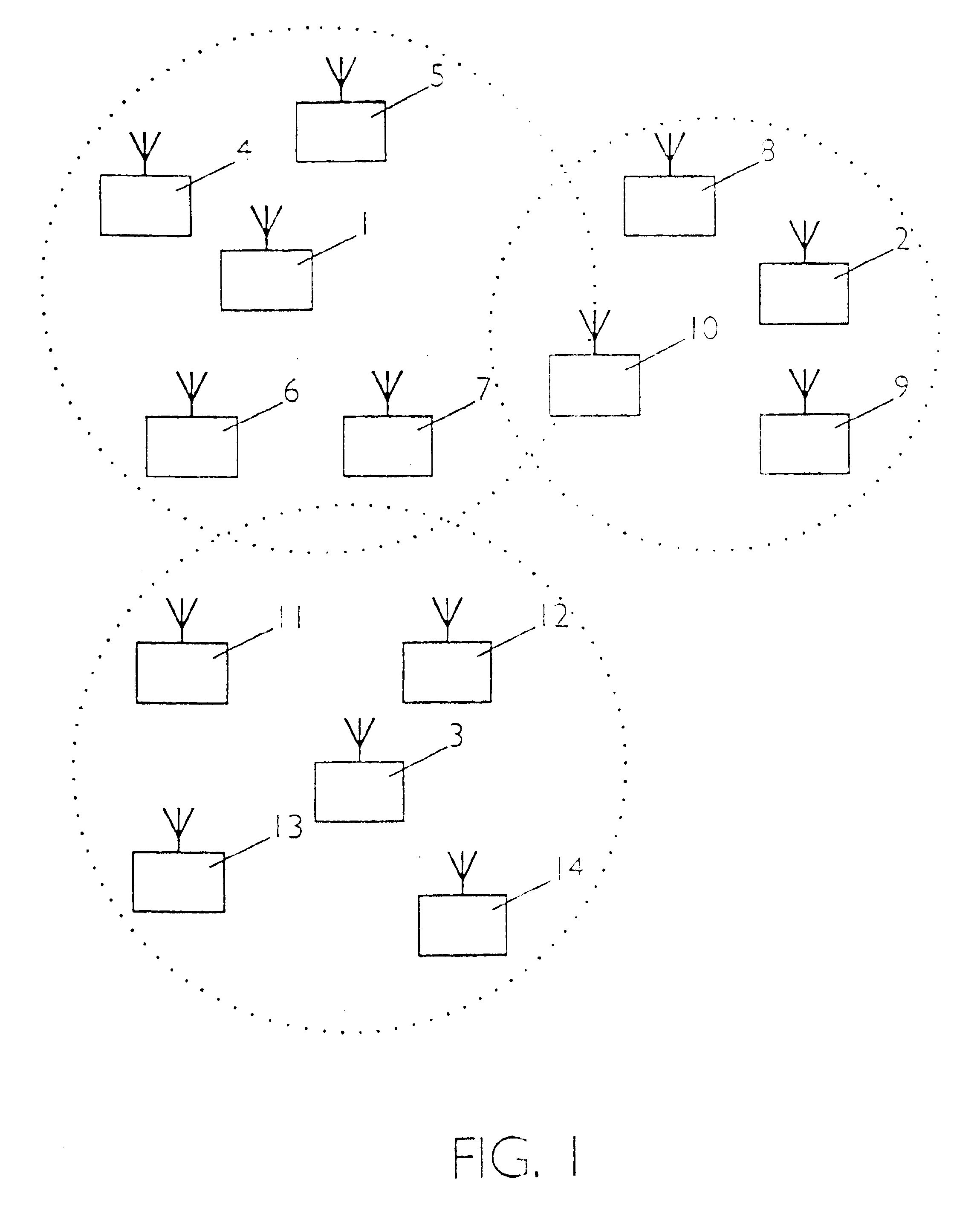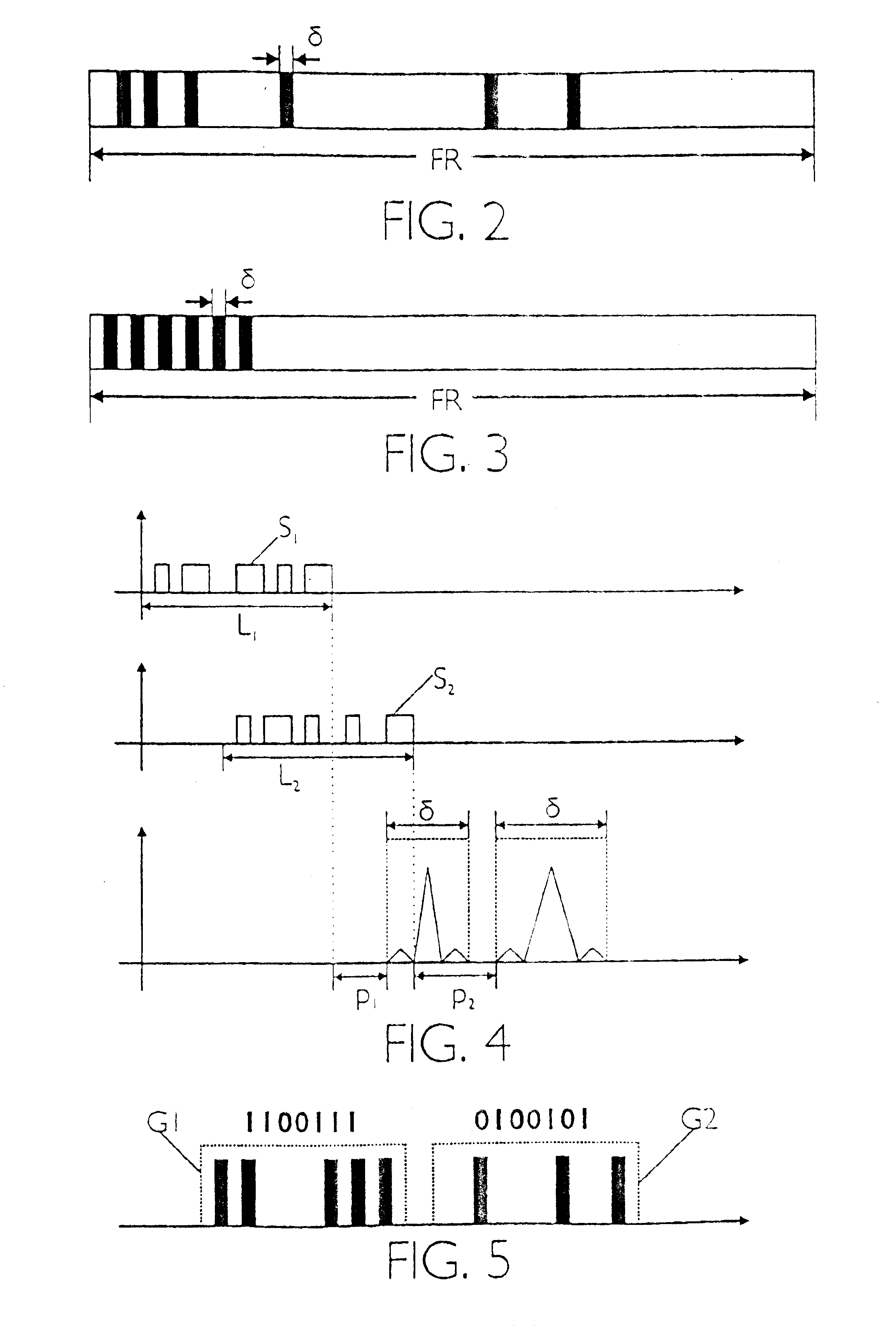Wirless network
a wireless network and wireless technology, applied in the field of wireless networks, can solve the problems of inability to evaluate the information transmitted by the terminals correctly by the base station, and the collision is bound to occur, so as to reduce the amplitude of pulses, reduce false alarms (far) of signaling sequences, and increase circuitry
- Summary
- Abstract
- Description
- Claims
- Application Information
AI Technical Summary
Benefits of technology
Problems solved by technology
Method used
Image
Examples
Embodiment Construction
[0024]FIG. 1 shows a wireless network, for example, a radio network with a plurality of base stations 1 to 3 and a plurality of terminals 4 to 14. A base station 1 to 3 is assigned certain terminals 4 to 14. In the example shown in FIG. 1, the base station 1 is assigned the terminals 4 to 7, the base station 2 the terminals 8 to 10 and the base station 3 the terminals 11 to 14. An exchange of control data takes place at least between the base station and the terminals. An exchange of user data can take place between the base station and the terminals as well as directly between the terminals. In both cases the link for the transmission of user data is established by the base station. The terminals 4 to 14 are usually mobile stations which are controlled by a stationary base station 1 to 3. The base station 1 to 3, however, may also be mobile.
[0025]In the wireless network, for example, radio signals are transmitted in conformity with the FDMA, TDMA or CDMA method (FDMA=Frequency-Divi...
PUM
 Login to View More
Login to View More Abstract
Description
Claims
Application Information
 Login to View More
Login to View More - R&D
- Intellectual Property
- Life Sciences
- Materials
- Tech Scout
- Unparalleled Data Quality
- Higher Quality Content
- 60% Fewer Hallucinations
Browse by: Latest US Patents, China's latest patents, Technical Efficacy Thesaurus, Application Domain, Technology Topic, Popular Technical Reports.
© 2025 PatSnap. All rights reserved.Legal|Privacy policy|Modern Slavery Act Transparency Statement|Sitemap|About US| Contact US: help@patsnap.com



